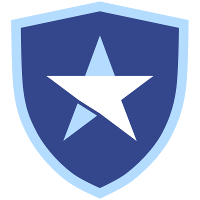go-callvis
hub-feedback
| go-callvis | hub-feedback | |
|---|---|---|
| 2 | 379 | |
| 5,746 | 231 | |
| - | 0.0% | |
| 2.9 | 0.0 | |
| about 1 month ago | almost 2 years ago | |
| Go | ||
| MIT License | - |
Stars - the number of stars that a project has on GitHub. Growth - month over month growth in stars.
Activity is a relative number indicating how actively a project is being developed. Recent commits have higher weight than older ones.
For example, an activity of 9.0 indicates that a project is amongst the top 10% of the most actively developed projects that we are tracking.
go-callvis
-
a tool for quickly creating web and microservice code
Dependency plugins and tools are automatically installed after executing the command: protoc-gen-go, protoc-gen-go-grpc, protoc-gen-validate, protoc-gen-gotag, protoc-gen-go-gin, protoc-gen-go-rpc-tmpl, protoc-gen-openapiv2, protoc-gen-doc, golangci-lint, swag, go-callvis.
- visualize dependency inside application
hub-feedback
-
Docker compose, orchestrating and automating services
image: this key specifies the image this container is based on to be created. It can be a local image or an image from the Docker hub.
-
Dockerizing Next.js
Finally, we can upload our application to Docker Hub so that other people can use the image we created. To do this, follow the steps below:
-
How to run PostgreSQL and pgAdmin on Docker?
Pull the official Docker distribution of pgAdmin 4 from the Docker Hub repository with the following command:
-
Securely Containerize a Python Application with Chainguard Images
To use Docker Scout, you'll first have to have a Docker Hub account. Follow the installation instructions for Docker Scout on GitHub. Once Docker Scout is installed, you can sign in to Docker Hub on the command line with the docker login command.
-
Building Scalable GraphQL Microservices With Node.js and Docker: A Comprehensive Guide
Go to Docker Hub, sign up, and log in to your account's overview page.
-
Welcome to world of Containerization
Login to Docker [Create an account with https://hub.docker.com/]
-
Next.js with Public Environment Variables in Docker
Docker Hub
-
Leveraging GitHub Actions, Docker, Code Quality, and Slack Integration
Dockerhub account
- (Docker) Criando um ambiente LAMP utilizando Docker-Compose
-
A Gentle Introduction to Containerization and Docker
There are a lot of docker-compatible registries almost every cloud provider has its registry but for this article, we will use the docker registry called docker hub. Go to the website create a new account and sign in then you can push or pull images.
What are some alternatives?
depth - Visualize Go Dependency Trees
rook - Storage Orchestration for Kubernetes
golang-tutorials - Golang Tutorials. Learn Golang from Scratch with simple examples.
kubernetes - Production-Grade Container Scheduling and Management
OctoLinker - OctoLinker — Links together, what belongs together
chartmuseum - helm chart repository server
colorgo - Colorize (highlight) `go build` command output
Harbor - An open source trusted cloud native registry project that stores, signs, and scans content.
zb - an opinionated repo based tool for linting, testing and building go source
Docker Compose - Define and run multi-container applications with Docker
Golang-PDF-to-Image-Converter - This project will help you to convert PDF file to IMAGE using golang.
Portainer - Making Docker and Kubernetes management easy.

